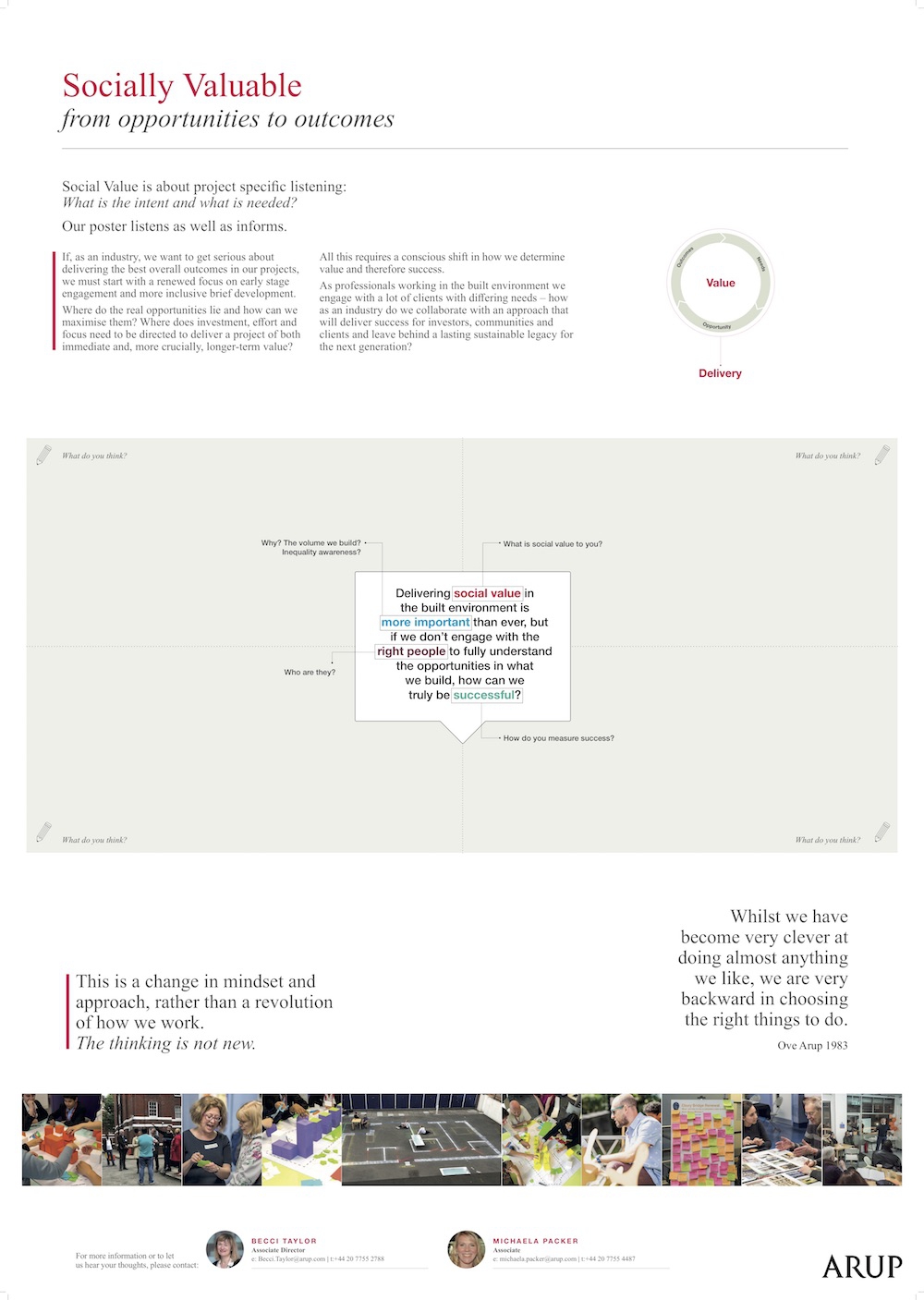Cities / Healthy Cities
Socially valuable: from opportunities to outcomes in the built environment
By Michaela Packer and Becci Taylor | 10 Oct 2019 | 0
This poster underlines the importance of a renewed focus on early-stage engagement and more inclusive brief development when undertaking projects.
Abstract
As professionals working in the built environment, it’s incumbent on us to maximise the benefits and utility. In recent years, the industry has shifted with the Social Value Act 2012 and the United Nations’ Sustainable Development Goals in 2015, laying down significant markers for us, but short-term objectives focused on financial return still prevail. If we’re serious about delivering the best outcomes in our projects, we must start with a renewed focus on early-stage engagement and more inclusive brief development.
Our framework:
Phase one: understanding needs and opportunity
Early engagement begins before a project starts – understanding the community and its issues is crucial. This means getting out there, speaking to community leaders, and engaging the community. Gathering insights and valuing the feedback, we obtain better connects solutions with actual needs. We can then ask where the real opportunities lie and how can we maximise them? This is the part that often gets missed or delayed.
Phase two: defining the outcomes
The insights from phase one allow us to better define social value outcomes early on. The start of a project can be loaded with pressure. These pressures, however, cannot come at the expense of understanding what people need. This upfront effort achieves two crucial things: mobilising design effort towards a shared vision, and better long-term return on investment.
Phase three: assessment
We need to measure our designs through delivery and after completion, to ensure our targeted value outcomes are being achieved, and to have the opportunity to feedback constructively into future developments. Both the delivery and assessment of a project naturally become focused and meaningful following phases one and two.
This framework, and variations of it, can be taken onboard by everyone. It’s not a revolution, just a change in mindset. It’s reconnecting us to the reason we’re all passionate about the built environment – creating things that positively impact us and make our lives better. We’ll look to show the impact this approach can have through case studies, one of which is the work we completed for Sheffield City Council. Through this case study it’s made clear that early engagement is key to identifying opportunities. This is embracing social value as a decision-making tool to deliver something entirely outcome-focused. The approach can benefit us all:
- for investors: it will deliver longer-term return on investment in a changing world;
- for clients: it will result in an asset that is loved and fit for purpose; and
- for designers: if the brief is right earlier, all effort can be spent on creating the best design.
Organisations involved


